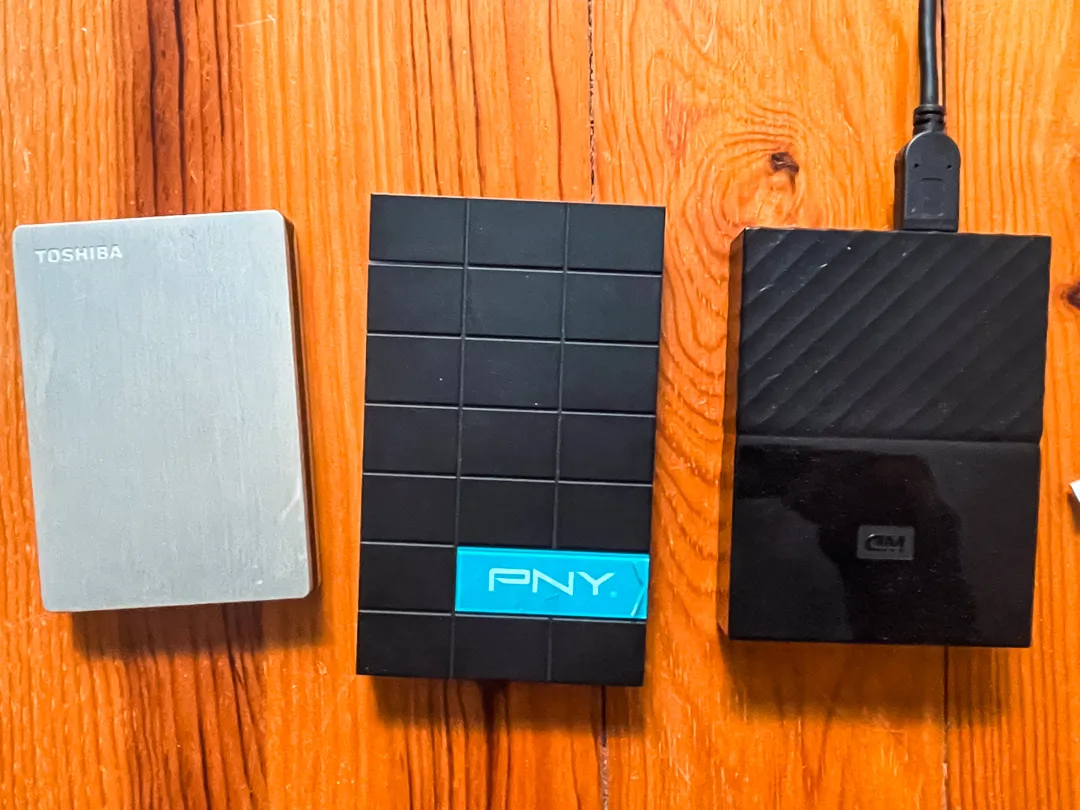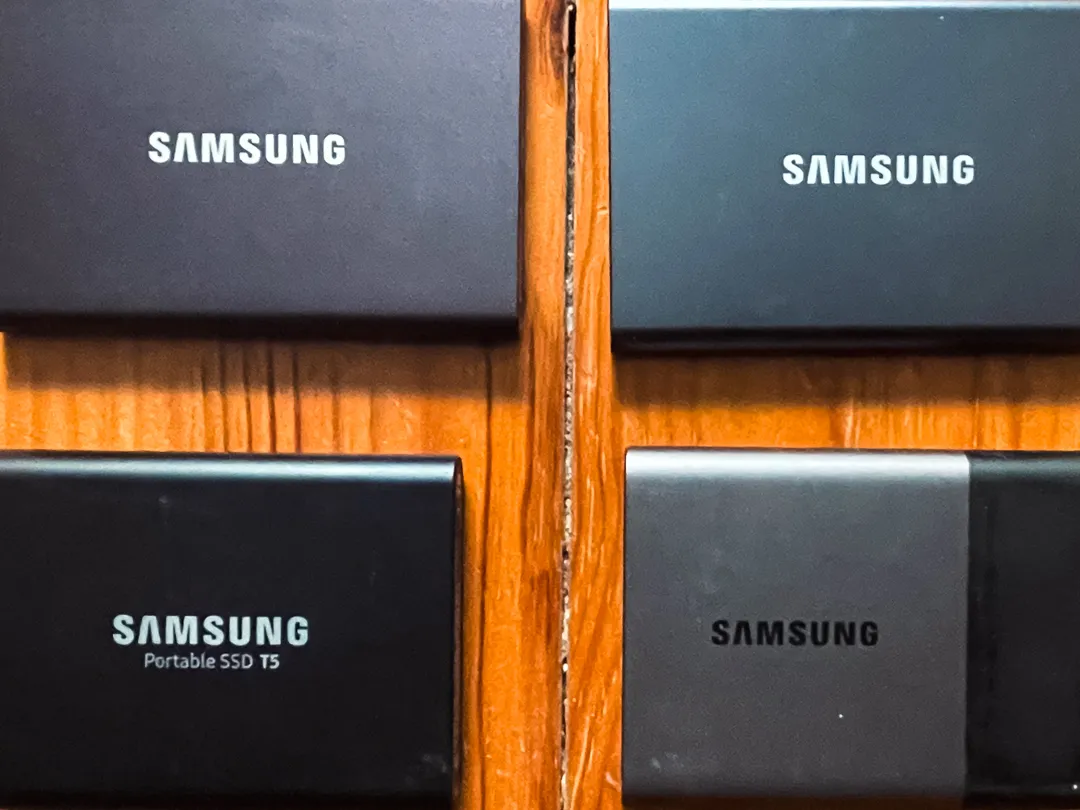Many M1 Mac users—including myself—are facing a frustrating issue: Samsung T7 portable SSDs won’t mount.
These drives worked fine with older MacBook models (and still do), but now, reports of the problem are all over online forums and social media. Users describe how their SSDs disappear from their Macs, no matter how many times they try reconnecting or troubleshooting.
In my case, I own four Samsung SSDs (T7 2TB, T5 1TB, T3 250GB, and another 1TB drive), and none of them mount—not on my MacBook, nor on any MacBook in my studio. Yet, they work perfectly on older models. Strangely, other brands like WD Passport have no issues at all.
So far, Apple and Samsung haven’t been much help. Apple support typically dismisses the issue, saying the drive should “just work,” while Samsung’s troubleshooting steps rarely solve anything.
With no clear explanation, speculation is all over the place. Some suspect a software conflict between the M1 chip and the T7 SSD, while others blame driver issues, bad cables, faulty USB ports—or honestly, just about anything at this point.

In the absence of real solutions, affected users are turning to each other for help. Some have had partial success using a Thunderbolt 3 dock or transferring files through another computer, but these workarounds are clunky and unreliable. I looked for answers every where from Reddit to Medium, etc.
At the core of this problem is something bigger: the growing disconnect between tech companies and their users. Without clear communication or real support, many of us feel left in the dark.
Apple, Samsung—we need a real, definitive solution.
This is what I have been through so far, with no success :
Step 1. Check Cable & Ports
- Try a different USB-C cable (preferably the original one).
- Plug the drive directly into the Mac, avoiding hubs or adapters.

Step 2. Verify in Disk Utility
- Open Disk Utility (
Cmd + Space, type Disk Utility). - Check if the drive appears in the left sidebar (even if greyed out).
- If it’s there, click Mount.
- If not, go to View → Show All Devices.
Step 3. Check Finder Preferences
- Open Finder → Settings (or Preferences in macOS Ventura and older).
- Under Sidebar, ensure « External Disks » is checked.
- Under General, ensure « External Disks » is checked.
Step 4. Reset NVRAM & SMC (For Intel Macs)
Not applicable to M1 Macs, but sometimes resetting the SIP (System Integrity Protection) helps:
- Boot into macOS Recovery (
Cmd + Rat startup). - Open Terminal and type:
csrutil disable - Restart and check if the drive mounts.

Step 5. Format Compatibility Check
- If the drive is formatted as NTFS, macOS can only read it (not write).
- If it’s APFS or Mac OS Extended (Journaled), it should work.
- If needed, reformat it (Warning: This erases all data!):
- Open Disk Utility.
- Select the drive → Click Erase.
- Choose APFS (for SSDs) or ExFAT (for Mac & Windows compatibility).
Step 6. Check via Terminal
- Open Terminal (
Cmd + Space, type Terminal). - Run:
diskutil list - If the drive appears but is not mounted, try:
diskutil mount /dev/diskX(Replace
diskXwith the correct identifier fromdiskutil listoutput.)
Step 7. Samsung Software Conflict
- Samsung T7 uses Samsung Portable SSD Software, which might conflict with macOS security settings.
- Try uninstalling the Samsung software and check again.
- If security issues persist, allow kernel extensions:
- Go to System Settings → Privacy & Security.
- Scroll down to Security section and allow Samsung drivers.
Step 8. Try a Different Mac or OS Update
- If the drive works on an older Mac, check if your macOS is up to date (
Apple Menu → System Settings → Software Update). - Try connecting the drive to another M1/M2 Mac to see if it’s a broader compatibility issue.
Step 9. Test in Safe Mode
- Boot in Safe Mode (shut down, then hold Shift while turning on).
- Try mounting the drive in Safe Mode.
10. Use Third-Party NTFS Software
- If your drive is NTFS, you need a third-party tool like:
- Paragon NTFS for Mac
- Tuxera NTFS
- Mounty for NTFS (free)
Final Option: Try a Different Enclosure
- Some enclosures have firmware incompatibilities with M1 Macs.
- If it’s an external SSD enclosure, try a different USB-C adapter or dock.
Let me know what you’ve tried, and I’ll help further! 🚀
Step 10: Check System Report (Verify USB Detection)
Your drive might not be detected at the hardware level.
- Go to Apple Menu → About This Mac → System Report.
- On the left, under Hardware, click USB.
- Check if Samsung T7 appears under USB devices.
If the drive is not listed:
- Try a different USB-C port.
- Try a different USB-C cable.
- Test with a USB-A to USB-C adapter if available.
Step 11: Check for Samsung T7 Firmware Updates
Samsung released firmware updates for M1 compatibility issues.
- Download the latest firmware update from Samsung:
🔗 Samsung SSD Software - Install Samsung Portable SSD Software.
- Update the T7 firmware and restart your Mac.

Step 12: Check Security Settings (Allow Samsung Software)
Some macOS versions block third-party kernel extensions.
- Go to System Settings → Privacy & Security.
- Scroll to the Security section.
- If there’s a message about « Samsung software being blocked, » click Allow.
- Restart your Mac.
Step 13: Manually Mount via Terminal
Even if the drive is not appearing in Finder, try this:
- Open Terminal (
Cmd + Space, type Terminal). - Run:
diskutil list - If you see your Samsung T7 (e.g.,
/dev/disk2), try:diskutil mountDisk /dev/disk2(Replace
disk2with the correct identifier.) - If the disk is unmounted, force-mount it:
sudo diskutil mount /dev/disk2
Step 14: Reset Mac’s USB System
If your Mac is refusing to recognize the drive, resetting the USB controller might help.
- Shutdown your Mac completely.
- Unplug all accessories (including power).
- Wait 5 minutes and restart the Mac.
- Try plugging in the drive again.
Step 15: Test with a Bootable USB
If all else fails, let’s check if the issue is software-related.
- Create a bootable macOS USB drive.
- Boot into macOS Recovery (
Cmd + Ron startup). - Check Disk Utility in macOS Recovery.
- If the drive appears, the problem is likely macOS software-related.
Step 16: Check if macOS Needs a USB Update
Some versions of macOS (especially Monterey & Ventura) had USB issues with Samsung T7.
- Update macOS:
- Go to System Settings → General → Software Update.
- Install the latest update.
- Check if Apple Silicon USB support is updated:
- Open Terminal and run:
system_profiler SPUSBDataType - This will list USB device info. If your T7 doesn’t appear, it’s a deeper USB driver issue.
- Open Terminal and run:
Step 17: Try an External Hub or Dock
Some USB-C ports on M1 Macs have issues with power delivery for external SSDs.
- Try plugging the Samsung T7 into a powered USB-C hub.
- If the drive works through a hub but not directly, your Mac’s USB power could be limiting the SSD.
Step 18: Test on Another M1/M2 Mac
- If possible, try your Samsung T7 on another M1 or M2 Mac.
- If it works there, the issue is specific to your Mac’s setup.
Step 19: Final Solution – Format the Drive (If Nothing Else Works)
If your Samsung T7 is detected but refuses to mount, the file system could be corrupted.
⚠️ WARNING: This will erase all data!
- Open Disk Utility.
- Select the Samsung T7 (left sidebar).
- Click Erase.
- Format as:
- APFS (if used only on Mac).
- ExFAT (if used on Mac & Windows).
- Click Erase → Try mounting it again.
I also have this problem,
and I’m also looking for solutions,
and I’m also waiting for an answer 🙁